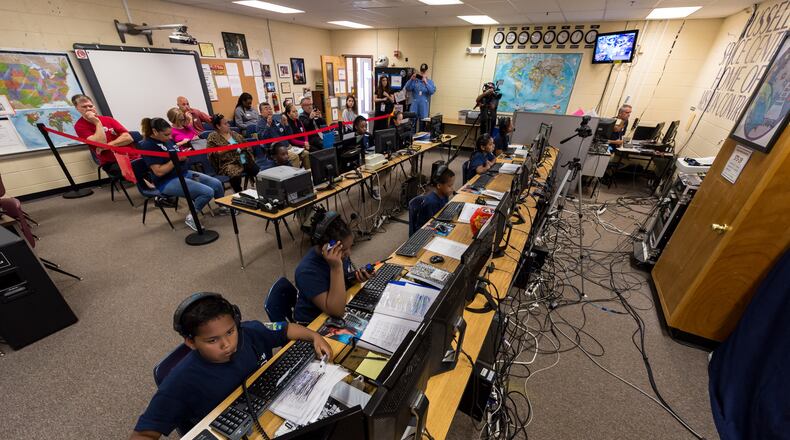In the search for ways to get more kids interested in math and science, the staff at Russell Elementary in Smyrna turned to outer space. In the late 1990s, they created an elite Space Team and a space shuttle program that has become one of the few of its kind in the country.
“To my knowledge, this is the only program like this in the country,” said Chris Laster, a Russell math teacher who coordinates the team. “There were a few others, but they’ve all shut down. A lot of school systems didn’t see a straight line from this activity to raising test scores.”
The Russell program has survived since its inception 10 years ago when the school sponsored a trip to the U.S. Space and Rocket Center in Huntsville, AL.
“While we were watching kids at Space Cam train, one of the students said we should try the same thing at our school,” said Laster. “We’re always looking for new and creative ways to get students to interact with science and math, and that got the ball rolling.”
The program begins with students applying in August to be part of the team. Fourth and fifth graders must maintain high behavior standards and grades at the B level and above. If accepted, they receive in-depth training on space shuttle systems, orbital mechanics and mission control procedures. This year, 24 students made the team.
“It’s a very demanding program,” said Laster. “And it all happens after school. A lot of these kids have been staying until 5 o’clock since September. They take it very seriously.”
Students work in a mock-up of mission control that has eight consoles and patches of past programs adorning the walls. That room links to a simulator housed in a trailer that has been outfitted with a flight deck and control panel that closely resembles the real shuttle. Students train for a mission that requires teamwork to devise solutions for problems that pop up.
“Our flight plan is pretty standard – launching the space shuttle, deorbiting and bringing it back,” said Laster. “The experiments they perform change. We also do a 60- to 90-minute EVA (extravehicular activity) – a space walk – that requires the students in the simulator to suit up in high-altitude helmets and go through a decompression session in an airlock. This year’s EVA had students building a communications link between a computer and radio.”
Years of offering the program has paid off with a higher number of students drawn to math and science, said Laster. “Students have come back to me as adults and said this made them realize that their potential was so much greater than what they believed. It gave them impetus to go on to bigger things. We had three kids who graduated from Ivy League colleges, and I can’t tell you how many have gone to Georgia Tech, who have said the program gave them a vehicle to challenge themselves.”
Fifth-grader Samantha Luft led the all-girl astronaut crew for this year’s team and worked in the orbiter for 27 hours.
“It’s good we’re all girls because there’s not much privacy in there,” she said with a laugh. “But I wanted to do it because I thought it was cool and would benefit me a lot. Science is definitely my favorite subject, and I want to go into the science field.”
The team experience also gives students a chance to learn about space and science without having to leave Smyrna.
“We used to go to Huntsville every year, but we had to quit doing that a while ago,” said Laster. “It’s almost impossible to get money for that sort of field trip.”
Information: cobbk12.org/Russell.
About the Author
The Latest
Featured


